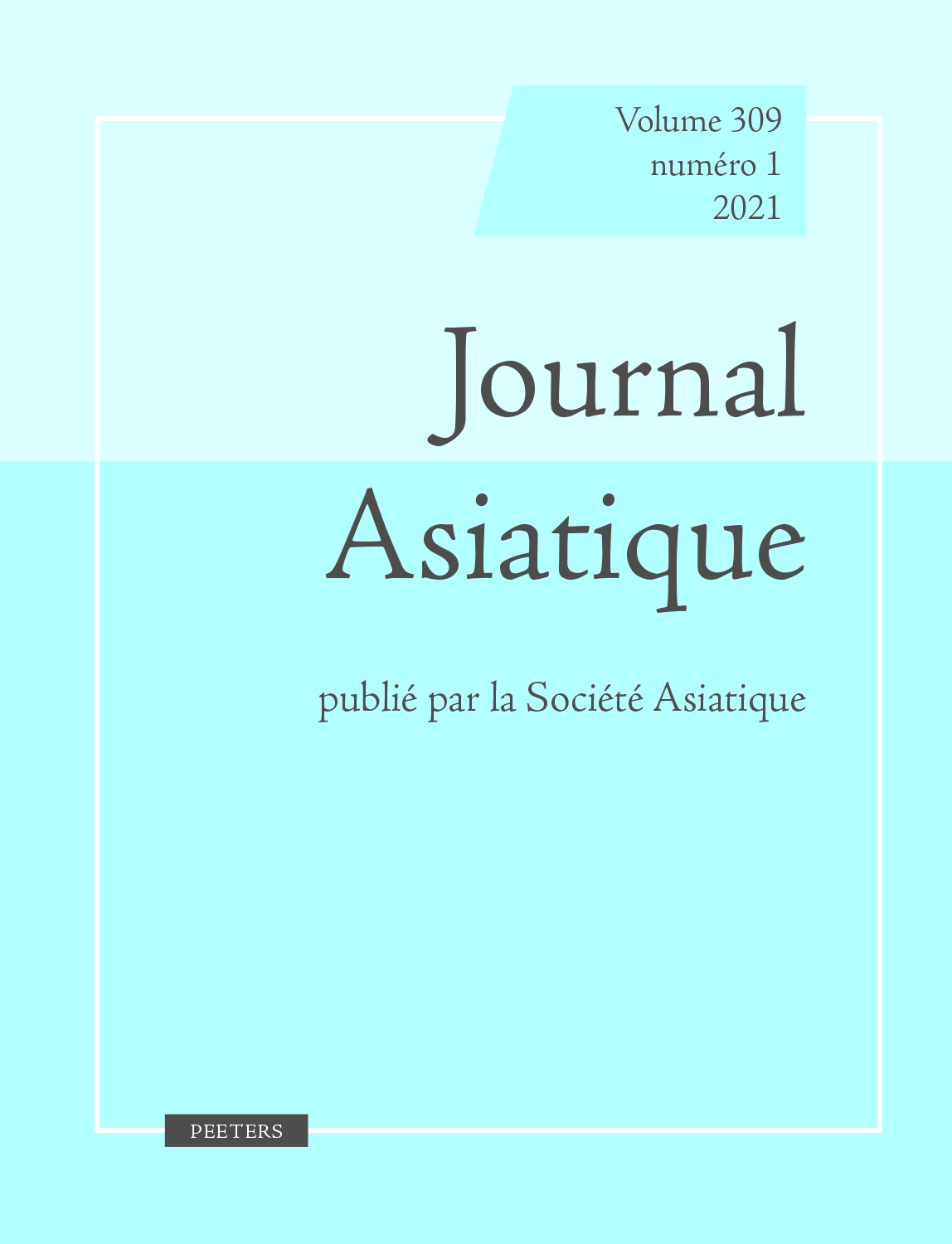 previous article in this issue previous article in this issue | next article in this issue  |

Preview first page |
Document Details : Title: The Anteṣṭividhi Subtitle: A Manual on the Last Rite of the Lakulīśa Pāśupatas Author(s): ACHARYA, Diwakar Journal: Journal Asiatique Volume: 298 Issue: 1 Date: 2010 Pages: 133-156 DOI: 10.2143/JA.298.1.2055069 Abstract : The Anteṣṭividhi is one of the four vidhi texts belonging to the Lakulīśa Pāśupatas recently discovered from Nepal. Since the sources for the studies of Atimārga Śaivism are limited, these vidhis attributed to a certain Gārgya have a special significance. They throw light on rituals of the Pāśupatas and so provide fresh clues for reconstructing the relations in ritual matters between the Atimārga and the Mantramārga. The Anteṣṭividhi deals with the Last Rite of persons initiated in the Pañcārtha or Lakulisa Pasupata system. It prefers burial of the dead body or its disposal in the waters and gives least priority to cremation. As the text prescribes, three ritual spaces are first created, and on the first and second of these, two Pāśupata teachers separately perform parallel rituals on the dead body and a śivaliṅga. In the second stage of the ritual, the dead person is shifted to the third ritual space and a soft śivaliṅga is placed on top of his head. The officiating teacher breaks that śivaliṅga and reforms it again five or seven times. This has a prognosticatory function, for it is done in order to decide what level of attainment the dead person has reached. Finally the dead body is buried or disposed in a large river or cremated. This article presents a critical edition of the Sanskrit text with an annotated translation. L’Anteṣṭividhi fait partie d’un groupe de quatre textes appartenant aux lakulīśa pāśupata qui a récemment été découvert au Népal. Puisque les sources pour l’étude du śivaïsme de l’atimārga sont peu nombreuses, ce corpus de vidhi, qui s’attribuent à un certain Gārgya, s’avère très précieux. Ils témoignent de la vie rituelle des Pāśupata et fournissent donc de la matière nouvelle susceptible à nous permettre de reconstruire les relations, en termes de pratiques rituelle, entre l’atimārga et le śivaïsme tantrique (le mantramārga). L’Anteṣṭividhi traite des rites funèbres d’initiés à la religion du pañcārtha (lakulīśa pāśupata). Le texte recommande l'enterrement du cadavre, son abandon dans un fleuve, ou bien la crémation, qui est évoquée comme l'option la moins préférable. Selon la prescription du texte, trois espaces rituels sont d’abord préparés. Dans les deux premiers, deux guru pāśupata accomplissent deux rites séparément, mais en parallèle, l’un opérant sur le cadavre et l’autre sur un śivaliṅga. Dans un deuxième temps, le corps est déplacé au troisième espace rituel, et un śivaliṅga mou est posé sur sa tête. Le prêtre officiant casse ce liṅga et le reforme cinq ou sept fois. Il s’agit de prendre les augures: les observations faites lors de cet acte permettent de décider quel niveau a été atteint par le décédé. A la fin, le cadavre est enterré ou abandonné dans un fleuve. Cet article présente une édition critique du texte en question, ainsi qu’une traduction anglaise annotée. |
|


